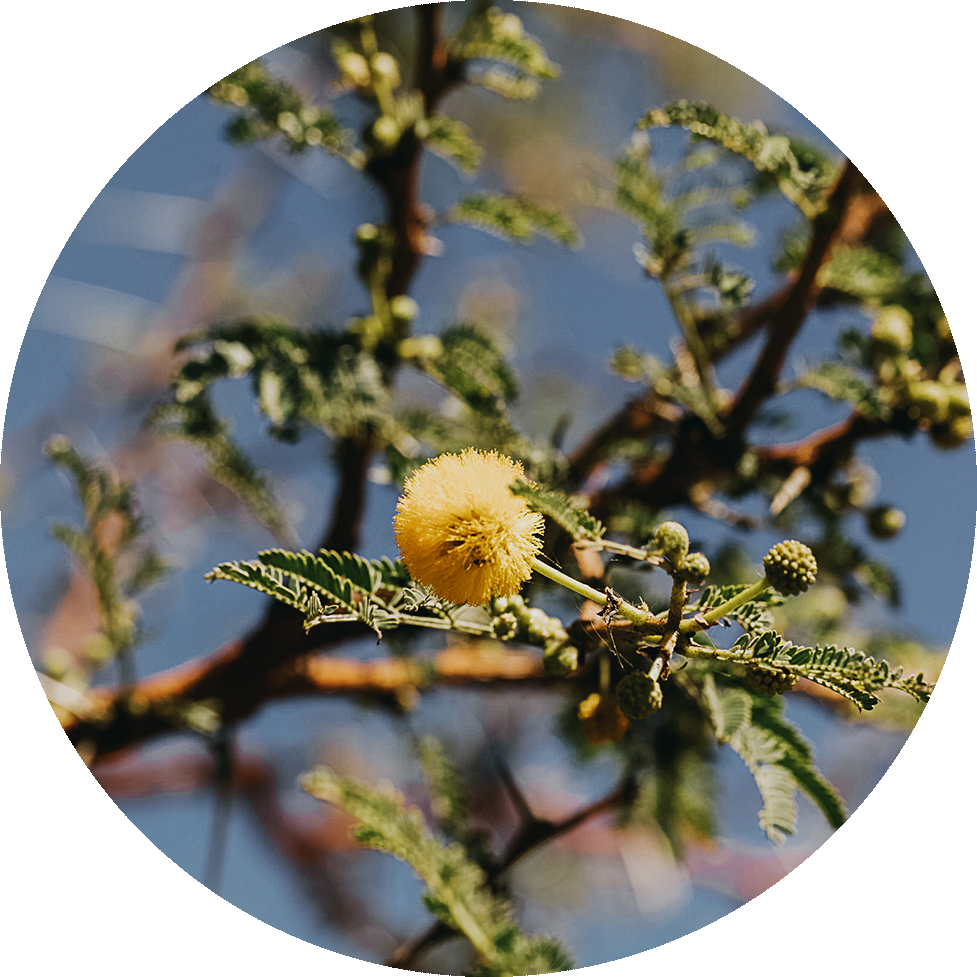Ingredients
Gum Acacia

LATIN NAME:
Acacia Senegal or Senegalia Senegal
COMMON NAME:
Gum Acacia, Gum Arabic Tree, Sudan Gum
LOCATION:
Sub-Saharan Africa, Sudan, Oman, Pakistan, Caoastal India
DESCRIPTION:
The Senegalia Senegal tree, or gum acacia tree, is
of profound economic importance because of the
gum arabic it produces. Gum arabic is a very versatile additive, found in adhesives, pharmaceuticals, inks, and confections. The gum is extracted from the tree’s bark, with each tree yielding up to 300 grams. Eighty percent of this product is produced in Sudan alone. The tree’s roots are also useful in making strong rope, while the bark is rich in tannin, a chemical used in dyes and inks.
Acacia is commonly combined with sandalwood and burned as an incense to enhance meditation.
TRADITIONAL APOTHECARY:
Gum acacia has traditionally been used as an astringent to treat bleeding, bronchitis, diarrhea, cough, and upper respiratory tract infections. Acacia gum has been used in pharmaceuticals as a demulcent, a substance relieving inflammation or irritation. It is also used topically to treat wounds, and has been shown to inhibit the growth of harmful bacteria and plaque. It can also be used to modify the chemical properties of foods – most recently, it was used in a clinical study to reduce cholesterol.
SOURCES:
Britannica
Drugs
Witchipedia












